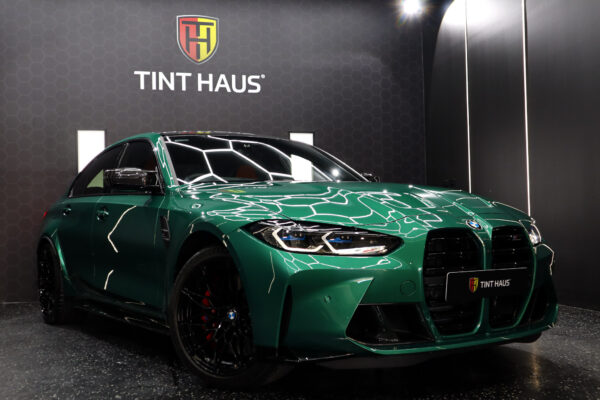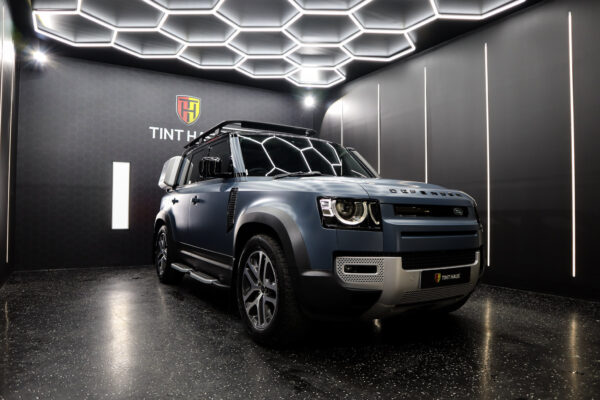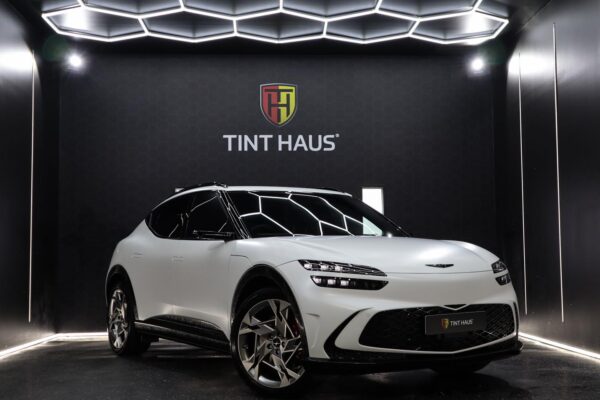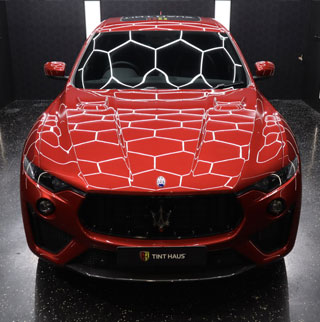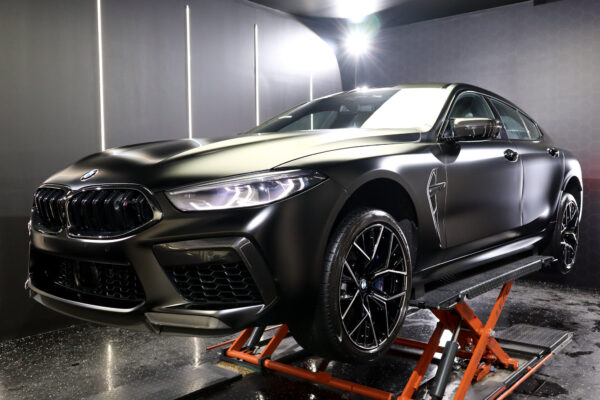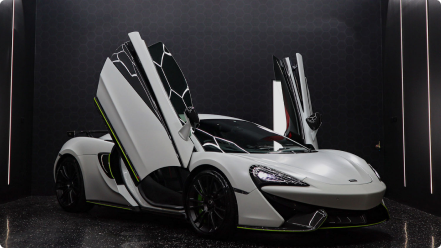Contents
Is Paint Protection Film Worth It? Benefits, Cost, and DIY vs Professional Options
PPF in a Nutshell
- Paint protection film adds a protective layer between a vehicle’s paint and the environment
- Professional paint protection film installation is recommended and requires technical skill
- Paint protection film is a cost-effective investment for long-term protection
- Modern PPF formulations have self-healing properties to repair minor scrapes
Introduction to Paint Protection Film
Whether you are worried about potential car paint scratches and general damage, or whether you’ve just had a shopping trolley scrape down the side of your new baby, you know the value of protecting your car’s paint.
And if your model is known to have paint issues – cough, Tesla, cough, it makes even more cars to ensure that it will not flake, fade and peel over time.
Modern car paint protection film formulations are an effective solution to all these concerns.
In this article, we break down what it is and isn’t, the benefits of ppf, the risks and more.
What is paint protection film?
Simply put, paint protection film, commonly called PPF, is a clear layer that bonds to your car’s top coat – creating another barrier between it and the environment.
Paint protection film is not the same as vinyl wrap
Vinyl is the same material that is used to put advertising vehicle wraps on commercial vehicles. It provides a degree of protection to but it is thick and coloured – meaning it is not able to showcase your existing paint work or provide a subtle gloss adjustment.
Paint protection film Is…
Paint protection film is a clear layer of thermoplastic urethane that is applied to your car’s body. Once in place, the coating bonds with the clear coat of the car’s factory paint and creates another layer of protection between the paint and the environment.
Modern paint protection films are very thin – for example, the XPEL PPF we use at Tint Haus is only 215 microns (0.215 mm) – this allows for full transparency if required. And since it is still 3 times thicker than your car’s clear top coat, it adds colour depth and is still thick enough to allow “self-healing” – see benefits below.
7 Benefits of paint protection film
In addition to the obvious benefit of protecting paint from scratches and minor damage, there are 7 major benefits our clients often mention.
- Save money
- Enhanced Appearance
- Self-Healing Properties
- Easier cleaning and maintenance
- Custom Fit
- Long-Lasting
- Preserve Resale Value
#1 Save Money
Touching up and repainting panels from chips, scratches, UV damage, and minor scrapes quickly ads up. And the more valuable the vehicle, the more you save.
#2 Enhanced Appearance
Transparent PPF provides additional color depth, while the colour conversion options allow you to tweak the look to your needs.
#3 Self-Healing Properties
Many modern PPFs are able to ‘heal’ – meaning minor scratches and swirl marks disappear when exposed to heat. (Check with your installer how to do this.)
#4 Ease of Maintenance
PPF’s hydrophobic properties means water beads quickly and runs off – taking dirt and contaminants with it. In short, it makes cleaning your vehicle easier and reduces the need for frequent washing.
#5 Custom Fit
Professional installers use automatic cutting machines to produce the exact sizes for your model’s panels, eliminating potential edge delamination. You also have the option of only protecting key parts of your car – for example, the door edges, hood, bumpers and mirrors.
#6 Long-Lasting Protection
Professionally applied paint protection film often outlasts the average ownership of a vehicle. At Tint Haus for example, we stand by our 10-year warranty.
#7 Preserve Resale Value
All thes benefits mean that PPF helps maintain your vehicle’s original paint condition and so significantly enhance its resale value over time.
Are There Any Drawbacks To Paint Protection Film?
Most problems with ppf are the result of poor installation. DIY attempts (see below) often fail. And some professional installers lack the experience and access to the precision machines required to cut complex panel shapes.
Similarly, some ppf brands do not provide sufficient longevity. This is why only use STEK and XPEL PPF and we stand by them with a 10-year warranty.
Paint Protection Film Examples
Professional vs DIY Paint Protection Film Installation
Can I install Paint Protection Film myself?
Technically, it is possible to install PPF yourself. You can buy rolls of paint protection film online and attempt to install it. This is not just a “peel and stick” operation though.
You will need to take into account the following:
A Clean Environment
Any dust, dirt, and wind can ruin the application process – leaving creases and bubbles in the PPF or noticeable imperfections under the PPF. Professional installers have clean rooms to prevent this.
Surface Preparation
The top coat needs to be as clean as possible before the PPF can be applied. This typically involves hours of washing and drying and then cleaning again with isopropyl alcohol to remove any lingering oils or residue. The surface under the film needs to be perfectly clean and dry.
Remove any car badges.
If your paint is already scratched or damaged with swirls, you will need to correct this before you apply the PPF.
Cutting The Film
You will need to measure and cut the film precisely to fit each panel – while ensuring that the film itself does pick up any dust or grime. Professional PPF installers have automated machines known as plotters to pre-cut the pieces precisely from a digital library.
The Application
roll out the film, and carefully start applying it from one end, smoothing as you go. It does take some practice to get a smooth, full, bubble-free application, so you will want to start on less visible areas first.
If you have any overhanging pieces of PPF, they will quickly collect dirt and grime. Not, only does this look bad, but it means it will delaminate.
Hardening
It is vital that the film hardens and bonds sufficiently before exposure to the environment. If exposed too early, intense wind and rain can prevent the film from adequately hardening, making it more likely to delaminate especially around the panel edges.
How long does DIY paint protection film installation last?
Technically, DIY paint protection films can last as long as professionally installed ones if you purchase the same brand online – for example from the XPEL website. However, if you buy a cheap DIY kit, it is poorly applied or the surface was prepared incorrectly, they may last only half the time or even delaminate shortly after application.
How long does a professional ceramic coating last on a car?
A professional ceramic coating can last up to five years, depending on the product and the condition of your car’s paint. Regular maintenance and washing can help extend the life of the coating.
However, the Tint Haus Ceramic Coating comes with a lifetime warranty against bird/bat droppings, watermarks, paint fade, oxidisation, loss of gloss and tree sap.
How much does Professionally Installed Ceramic Coating Cost?
At Tint Haus, we install the toughest ceramic coating on the market (10H) for only $995. We also offer heavily discounted, bundled car protection packages.
Is Paint Protection Film Worth It?
If you have a newly bought car, a rare or luxury car, or even an upper-end brand that is your daily driver, the answer is yes.
Comparing the one-off-cost for Tint Haus PPF for 10 years of protection against retouching, repainting, and insurance excess, it is a no-brainer.
Most of our clients choose PPF as a package to save even more. View our Car Protection Packages.
Caring for Your Car With Paint Protection Film
One of the great benefits of PPF is the ease of maintenance it provides. The hydrophobic properties of the coating prevent dirt, grime, and water spots from sticking to the surface, making it much easier to clean. However, it’s still important to take proper care of your car to ensure its longevity.
Is PPF hard to maintain?
No, a car with paint protection film is actually quite easy to maintain. Regularly washing your car with a pH-neutral car wash solution and using a microfiber towel to dry it will help prevent water spots and keep your car looking shiny.
Can you wax over paint protection film?
Waxing over paint protection film is generally not recommended. First, it is redundant as the PPF is designed to provide a protective layer over your vehicle’s paint. Second, it can create a visible buildup of residue along the edges of the PPF, potentially compromising the seamless appearance that PPF is known for.
Tint Haus Paint Protection Film
We install only the best Paint Protection Films for our discriminating clients, that is why we are authorised XPEL and Suntek PPF installers.
These market-leading formulations are long-lasting and give your car the best possible protection.
Does your paint protection installation come with a warranty?
All our PPF installations come with a 10-year warranty against lifting and delamination – so you can rest easy.
The Tint Haus Difference
We pride ourselves on delivering the care and attention to detail our customers rightly expect with precision installation by qualified technicians with years of experience.
In addition, our state-of-the-art installation studios are equipped with industry-leading lighting and infrared curing lamps to guarantee an unsurpassed quality finish – every time.
Contact Tint Haus for a seamless PPF fitment every time.

